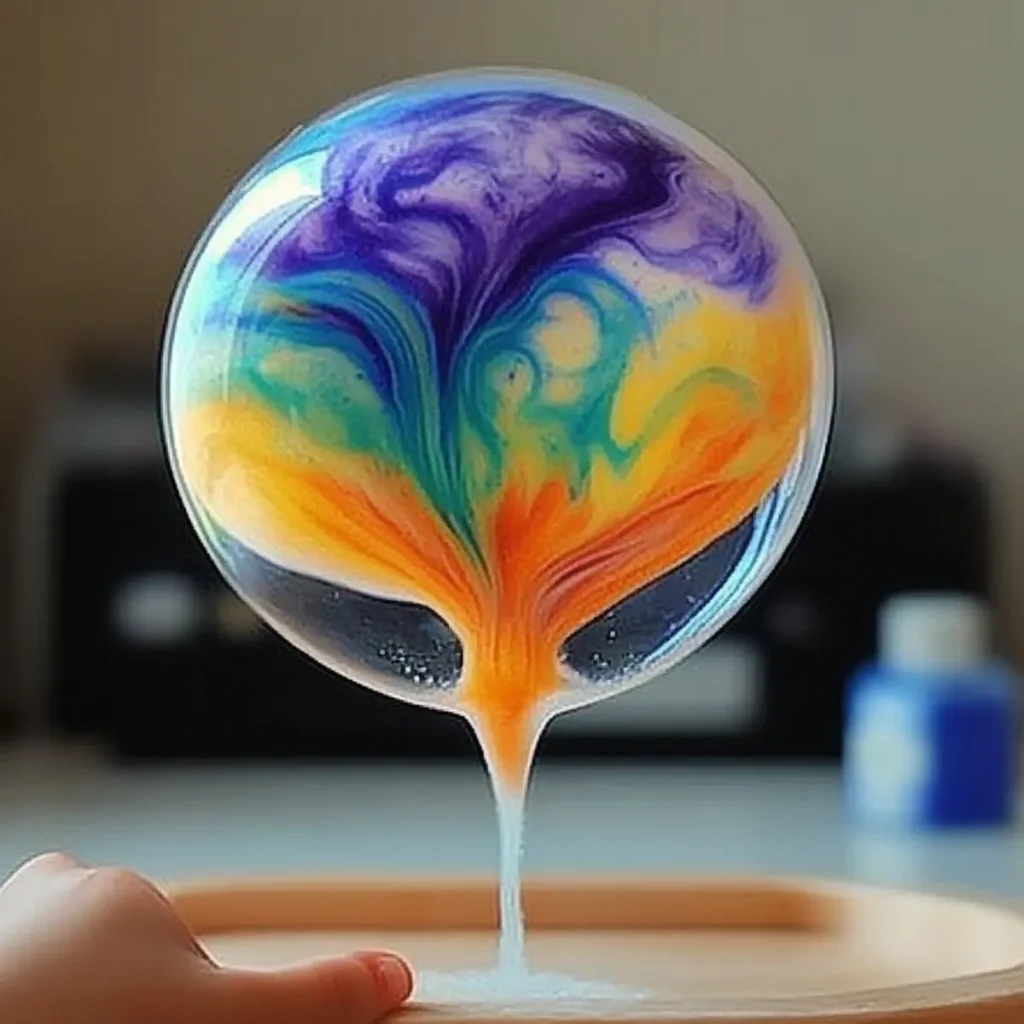
There's something truly captivating about the moment when baking soda meets vinegar, igniting a spectacular fizzy reaction! I first discovered this exhilarating Balloon Baking Soda Experiment while looking for engaging activities to keep my kids entertained on a rainy afternoon. It quickly turned into our favorite science activity, combining a little education with a lot of fun.
In just 10 minutes, you'll watch their eyes light up as the balloon inflates before their very eyes! This delightful experiment not only tests out basic chemical reactions but also sparks curiosity and creativity. You can even customize it with a splash of food coloring for an extra visual treat. Whether you're looking for a fantastic weekend project or an engaging birthday party activity, this experiment is a perfect way to bring science to life in the most entertaining way. So, grab your supplies, and let's get sizzling!
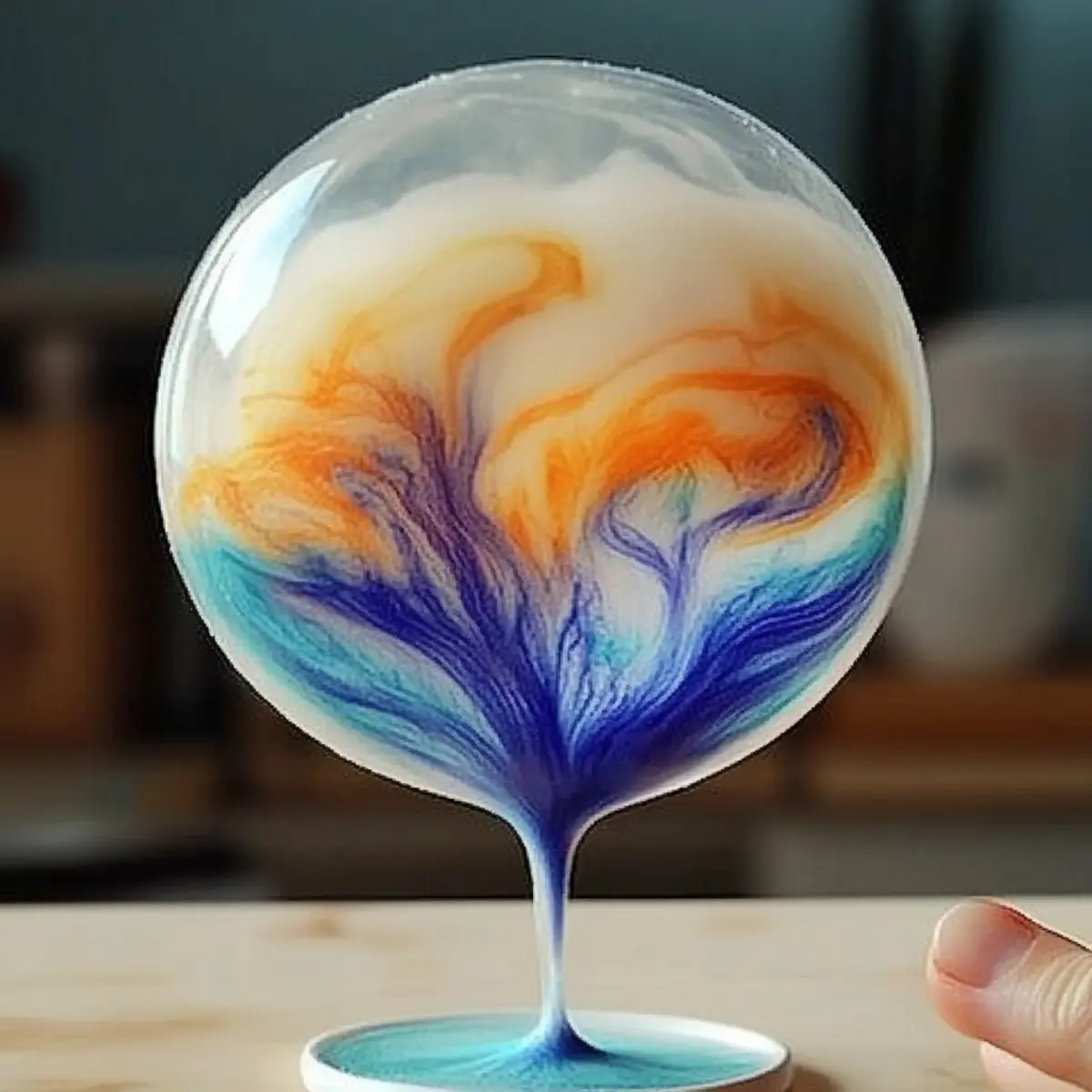
Why Will You Love This Balloon Baking Soda Experiment?
Exciting, Interactive Fun: This experiment is not just a quick project; it's an exhilarating hands-on activity that will captivate kids and adults alike.
Educational Value: It teaches fundamental scientific concepts like chemical reactions in an engaging way, making learning enjoyable.
Quick Setup: With only a few common household ingredients needed, it takes just 10 minutes to prepare and conduct, perfect for busy families.
Personalized Creativity: You can add food coloring or glitter, making each experiment visually unique and special.
Great for Group Activities: This experiment doubles as an excellent party activity, allowing multiple kids to participate and enjoy the fun together!
Balloon Baking Soda Experiment Ingredients
• Prepare for an explosive fun!
- Balloon - The balloon captures the gas produced during the reaction; any color works, but larger balloons allow for bigger reactions.
- Small plastic bottle - This serves as the container for the vinegar and the site of the reaction; ensure it is clean and dry before use.
- Baking soda - This key ingredient reacts with vinegar to produce carbon dioxide gas; a few tablespoons are needed for a good reaction, and more will create a bigger 'explosion'.
- Vinegar - The acidic component that reacts with the baking soda; use standard white vinegar, but apple cider vinegar works well too for a unique twist.
- Small funnel or paper cone - This aids in pouring baking soda into the balloon without spilling; you can easily make one out of paper if needed.
- Optional - Food coloring or glitter - Adds a fun visual element to the reaction; use it sparingly to avoid excess mess.
Get ready for a fizzy adventure with your kids that's both exciting and educational!
How to Make the Balloon Baking Soda Experiment
-
Prepare the Balloon: Using the funnel, carefully fill the balloon with baking soda. Ensure it's packed snugly but not overly stretched to prevent breakage during the experiment.
-
Set Up the Bottle: Pour approximately ½ cup of vinegar into the small plastic bottle. Watch for bubbles forming as the vinegar prepares for the reaction.
-
Assemble the Experiment: Gently stretch the opening of the balloon over the mouth of the bottle, being cautious not to let the baking soda fall in just yet.
-
Initiate the Reaction: Lift the balloon to allow the baking soda to fall into the vinegar inside the bottle. Step back, and enjoy the show as the balloon inflates due to the gas produced!
-
Optional Variation: For an added visual treat, consider adding a few drops of food coloring or a sprinkle of glitter to the vinegar before starting.
Optional: Experiment with different balloon sizes for a more spectacular reaction!
Exact quantities are listed in the recipe card below.
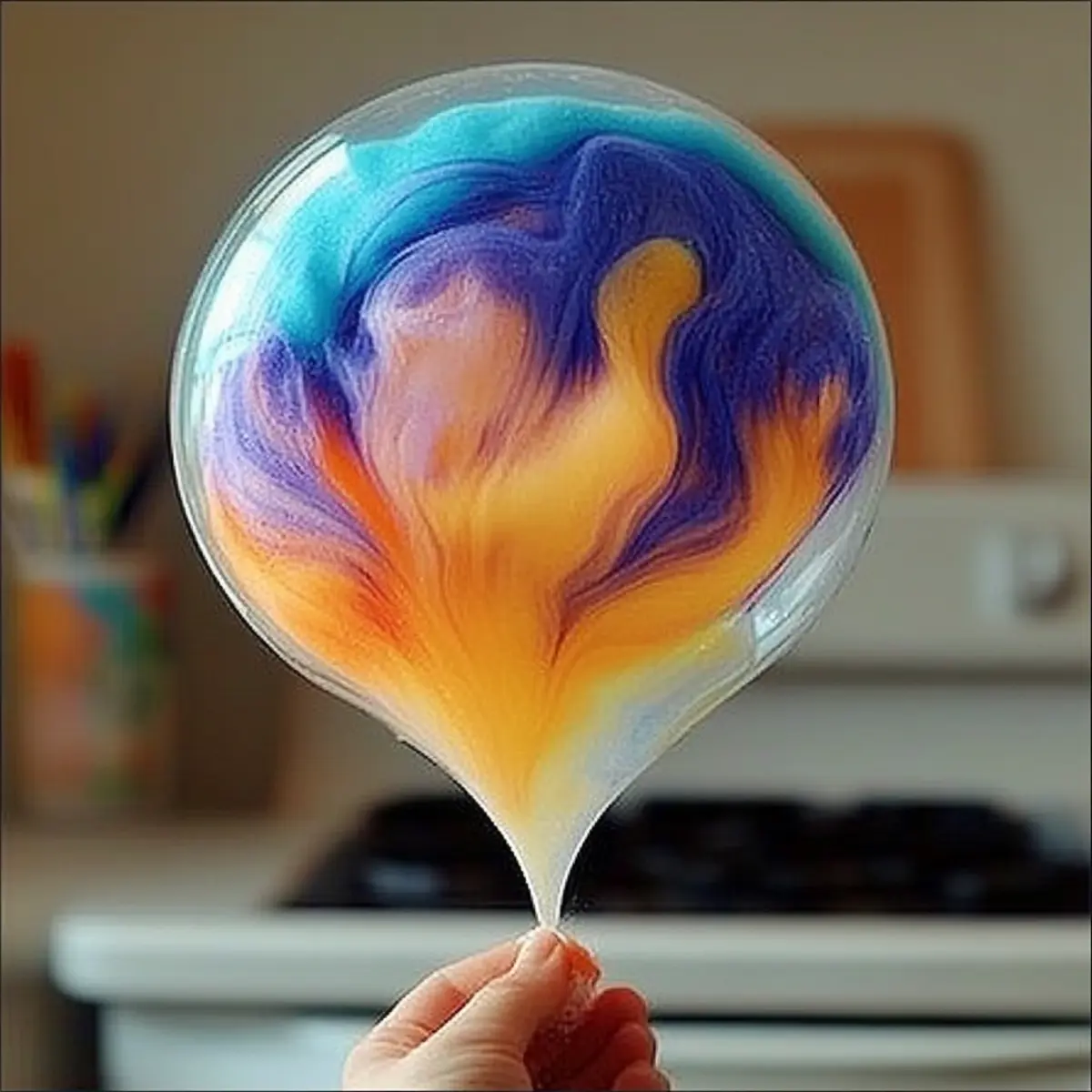
Balloon Baking Soda Experiment Variations
Looking to add a twist to the classic balloon experiment? Here are some delightful ways to customize this fizzy fun!
-
Apple Cider Vinegar: Swap white vinegar for apple cider vinegar to introduce a slightly different aroma, while still achieving that thrilling reaction.
-
Colorful Sparks: Use various food colorings in the vinegar for vibrant, eye-catching reactions. You can mix colors to create a swirling masterpiece!
-
Glitter Galore: Add a pinch of glitter for a sparkling effect during the experiment. Just be sure to keep cleanup in mind!
-
Extra Fizz: Increase the amount of baking soda for a bigger boom-just be prepared for an even larger balloon inflation!
-
Giant Balloons: Experiment with larger balloons to create an impressive spectacle; be ready to capture those mesmerizing moments.
-
Baking Soda Shapes: Before adding the baking soda to the balloon, mold it into fun shapes like stars or hearts for a playful twist.
-
Temperature Experiment: Use warm vinegar to see how the reaction changes. Warmer temperatures might lead to a more vigorous fizz!
-
Scented Reactions: Add a few drops of essential oils, like peppermint or lemon, to the vinegar for a fragrant twist while the balloon expands.
Let your creativity take flight as you explore these variations, making science both fun and unforgettable!
What to Serve with Balloon Baking Soda Experiment?
Transform your science project into a delightful family celebration with these exciting pairings!
-
Colorful Cupcakes: These sweet treats add a visual pop that complements the experiment's vibrant colors, perfect for a themed party.
-
Sparkling Lemonade: Refreshing and fizzy, this drink mirrors the excitement of the balloon inflation, making it a tasty companion for your experiment.
-
Fruit Kebabs: Fresh and juicy, these skewers offer a crunchy contrast that balances the sweetness of your educational adventure.
-
Mini Cheese Balls: Savory bites like these provide a delicious snack option, keeping energy levels up while kids learn and play.
-
Popcorn Bar: Set up a make-your-own popcorn station with toppings, mixing textures and flavors that keep kids engaged and hungry for more science!
-
Science-themed Cookies: Bake cookies shaped like beakers or atoms for a fun and thematic treat, ensuring a sweet finish after the fizzy fun.
These delightful pairings will not only elevate the atmosphere of your balloon experiment but also delight everyone involved!
Make Ahead Options
These Balloon Baking Soda Experiments can be prepared in advance to save time for your busy schedule! You can fill the balloon with baking soda up to 24 hours prior to your experiment and store it in a cool, dry place to maintain its effectiveness. Pour the vinegar into the bottle and keep it covered until you're ready to start the reaction. Just before you're set to impress the kids, simply attach the prepped balloon over the bottle and lift it, letting the baking soda fall into the vinegar. This way, you'll have the excitement of the fizzing reaction ready when you are, making your experiment just as delightful as if it were freshly done!
Expert Tips for the Balloon Baking Soda Experiment
-
Supervise Safely: Always ensure adult supervision during the experiment to keep little hands safe from spills and excitement.
-
Experiment with Ratios: Try different amounts of baking soda and vinegar to see how they affect the size of the balloon and the intensity of the reaction.
-
Keep It Clean: Use newspapers or a large tray to contain spills, preventing vinegar from staining surfaces during your balloon baking soda experiment.
-
Funnel Fun: If you don't have a funnel, make one quickly out of paper. This makes pouring baking soda into the balloon much easier and mess-free.
-
Customize Your Creation: Add food coloring or glitter to your vinegar for an extra pop of color and sparkle in your reaction, but do this sparingly to avoid mess!
-
Timing is Key: Conduct the experiment immediately after preparation for the best fizzing results; waiting too long may cause the ingredients to settle.
How to Store and Freeze the Balloon Baking Soda Experiment
Immediate Use: This experiment is best conducted right after preparation for optimal fizzing; storing it is not recommended as the reaction won't last.
Room Temperature: All ingredients should be kept at room temperature until you are ready to use them for the experiment; this ensures the best reaction.
Cleanup: If there's any leftover vinegar or baking soda after the experiment, simply dispose of it down the drain and clean the surfaces immediately to avoid any mess.
Reheating: The balloon baking soda experiment cannot be reheated or restored once the ingredients have reacted; it's all about enjoying the moment!
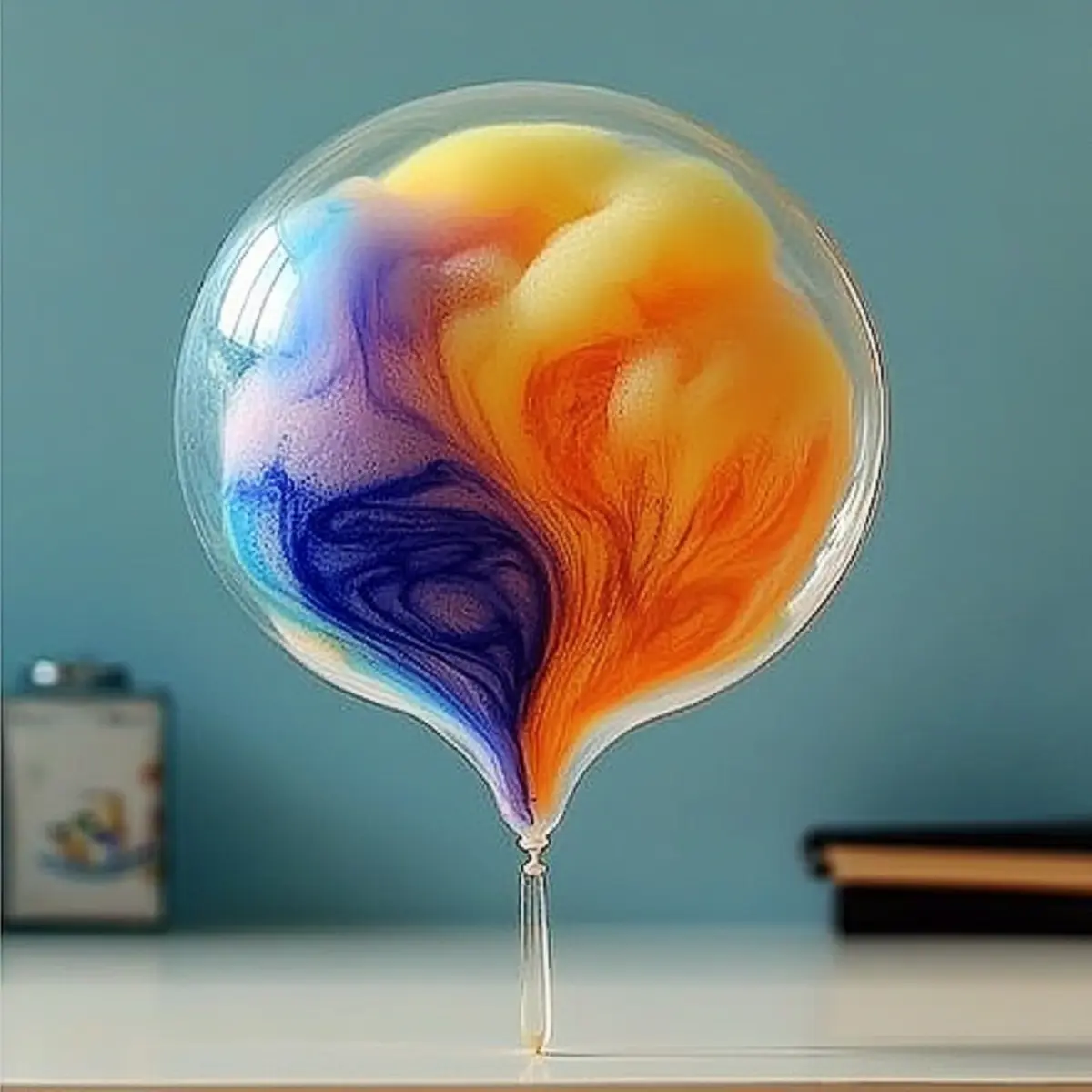
Balloon Baking Soda Experiment Recipe FAQs
Can I use any type of balloon for this experiment?
Absolutely! Any color of balloon works well for this experiment. Just remember, larger balloons will allow for a bigger reaction, giving you an even more explosive show!
How should I store any leftover ingredients?
It's best to conduct the balloon baking soda experiment immediately after preparation for optimal fizzing. However, you can store the vinegar and baking soda separately at room temperature in a cool, dry place until you're ready to use them.
Can I freeze the ingredients for later use?
No, freezing is not recommended for this experiment. Once mixed, the ingredients will lose their effectiveness and the reaction won't work as intended. Conduct the experiment fresh for the best results!
What if the balloon doesn't inflate properly?
If the balloon doesn't inflate, it could be due to too little baking soda or vinegar. Be sure to use the right quantities as per the recipe-about ½ cup of vinegar and a few tablespoons of baking soda. Also, make sure that the balloon's opening is securely over the mouth of the bottle to prevent gas from escaping.
Is this experiment safe for young children?
Very! Just ensure adult supervision to keep things safe, particularly when handling the vinegar and baking soda. If any spills occur, clean them up right away to avoid slipping. The experiment is extremely safe, making it perfect for kids and family fun!
Can I use flavored vinegar for extra fun?
Yes, you can mix it up with flavored vinegar like apple cider for a different smell and taste experience. Just remember, the scientific reaction will still be the same, so expect the same fizzy fun!
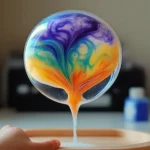
Fizzy Fun: The Ultimate Balloon Baking Soda Experiment for Kids
Equipment
- small plastic bottle
- small funnel or paper cone
Ingredients
- 1 unit Balloon Any color works, but larger balloons allow for bigger reactions.
- 0.5 cups Vinegar Standard white vinegar or apple cider vinegar for a unique twist.
- few tablespoons Baking soda More will create a bigger 'explosion'.
- optional Food coloring or glitter Adds a fun visual element.
Instructions
- Using the funnel, carefully fill the balloon with baking soda. Ensure it's packed snugly but not overly stretched to prevent breakage during the experiment.
- Pour approximately ½ cup of vinegar into the small plastic bottle. Watch for bubbles forming as the vinegar prepares for the reaction.
- Gently stretch the opening of the balloon over the mouth of the bottle, being cautious not to let the baking soda fall in just yet.
- Lift the balloon to allow the baking soda to fall into the vinegar inside the bottle. Step back, and enjoy the show as the balloon inflates due to the gas produced!
- For an added visual treat, consider adding a few drops of food coloring or a sprinkle of glitter to the vinegar before starting.

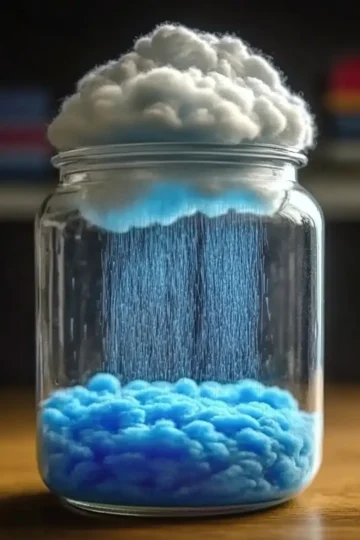
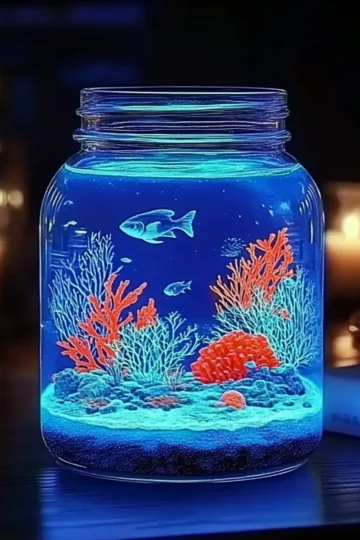

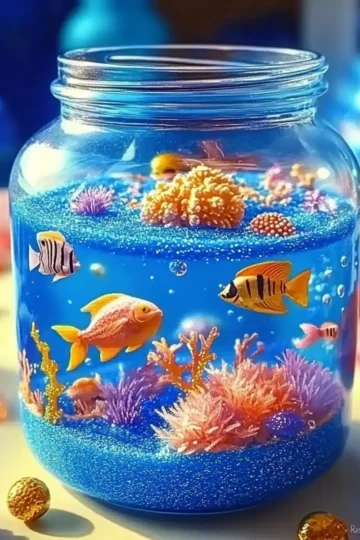
Leave a Reply